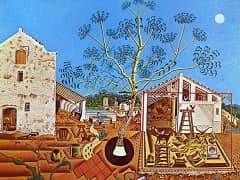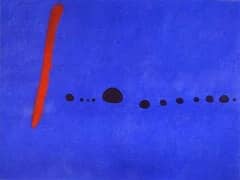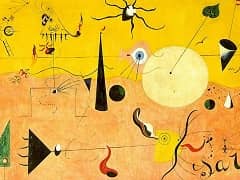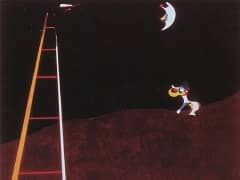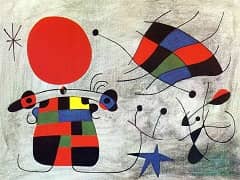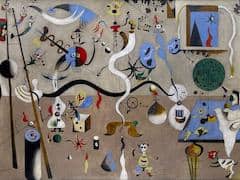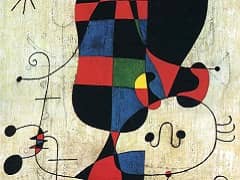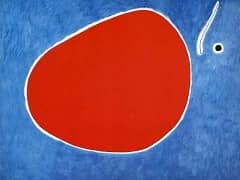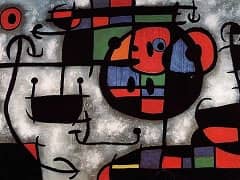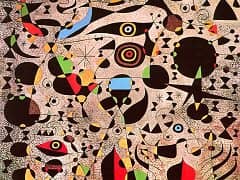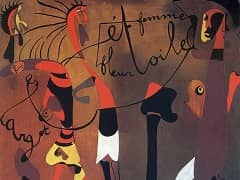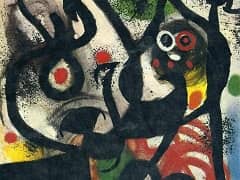Woman, 1934 by Joan Miro

This painting forms part of a series of pastels on flock paper with which Miro began his "wild period". A monstrous figure with a wide-open mouth and protruding front teeth can be seen rising against a surface which has been prepared with pastel and cross-hatched with pencil. The individual parts of the monster are reminiscent of bones or internal organs and possibly also Hans Arp's biomorphic abstractions.
The individual components stand out in bold relief against each other, due to their contrast of light and dark and the use of colour to emphasize their volume. There is no organic flux to connect them and no outstanding colour scheme to enhance their structure. It seems as if the figure was simply stuck together and then immersed in a dim light which has swallowed all the colours. The paddle-like extremities seem more like a pre-historic being than a human figure - whose enormous genital area marks it as female. Indeed, even though the technique is that of pastel, it has been robbed of its usual lightness and subtlety. The pigmentation seems dense and sombre, shaded in dirty smudges.
Miro himself said that he had been paralyzed at that time by terrible forebodings of the coming horrors of fascist rule. The "wild pictures" that were to follow show this terror even more clearly than this rather dead pastel. It was a terror that sprang from perplexity and broken creativity and showed itself in these monstrous configurations.

